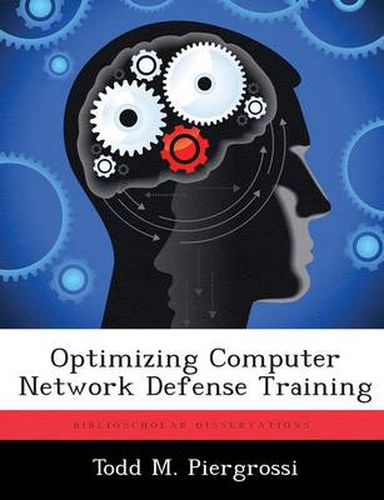Readings Newsletter
Become a Readings Member to make your shopping experience even easier.
Sign in or sign up for free!
You’re not far away from qualifying for FREE standard shipping within Australia
You’ve qualified for FREE standard shipping within Australia
The cart is loading…






This title is printed to order. This book may have been self-published. If so, we cannot guarantee the quality of the content. In the main most books will have gone through the editing process however some may not. We therefore suggest that you be aware of this before ordering this book. If in doubt check either the author or publisher’s details as we are unable to accept any returns unless they are faulty. Please contact us if you have any questions.
Computer Network Defense (CND) is inseparable from the daily responsibilities of the communications professional: establishing, operating, and optimizing the voice, video, and data network. The Tactics, Techniques and Procedures (TTPs) involved in responding to a Computer Network Attack (CNA) incorporate the identical tools used by the Network Control Center (NCC) when operating the network. In essence, CND is a subset of Information Assurance. In order to thwart the emerging Information Warfare threat, the Air Force needs to recognize and capitalize upon the similarities between CND and daily Information Assurance tasks. The critical linkage necessary to codify CND functionality is training. Commercial industry, as well as a number of uncoordinated military initiatives, has developed an extensive CND toolkit. Despite these technological innovations, current CND training as practiced by the USAF, suffers from inappropriate requirements development and a lack of disciplined synchronization with training opportunities. This paper will present the sources of CND training requirements, summarize the CND training opportunities currently available, and then suggest a promising Human Resource Management (HRM) methodology for linkage and synergy.
$9.00 standard shipping within Australia
FREE standard shipping within Australia for orders over $100.00
Express & International shipping calculated at checkout
This title is printed to order. This book may have been self-published. If so, we cannot guarantee the quality of the content. In the main most books will have gone through the editing process however some may not. We therefore suggest that you be aware of this before ordering this book. If in doubt check either the author or publisher’s details as we are unable to accept any returns unless they are faulty. Please contact us if you have any questions.
Computer Network Defense (CND) is inseparable from the daily responsibilities of the communications professional: establishing, operating, and optimizing the voice, video, and data network. The Tactics, Techniques and Procedures (TTPs) involved in responding to a Computer Network Attack (CNA) incorporate the identical tools used by the Network Control Center (NCC) when operating the network. In essence, CND is a subset of Information Assurance. In order to thwart the emerging Information Warfare threat, the Air Force needs to recognize and capitalize upon the similarities between CND and daily Information Assurance tasks. The critical linkage necessary to codify CND functionality is training. Commercial industry, as well as a number of uncoordinated military initiatives, has developed an extensive CND toolkit. Despite these technological innovations, current CND training as practiced by the USAF, suffers from inappropriate requirements development and a lack of disciplined synchronization with training opportunities. This paper will present the sources of CND training requirements, summarize the CND training opportunities currently available, and then suggest a promising Human Resource Management (HRM) methodology for linkage and synergy.